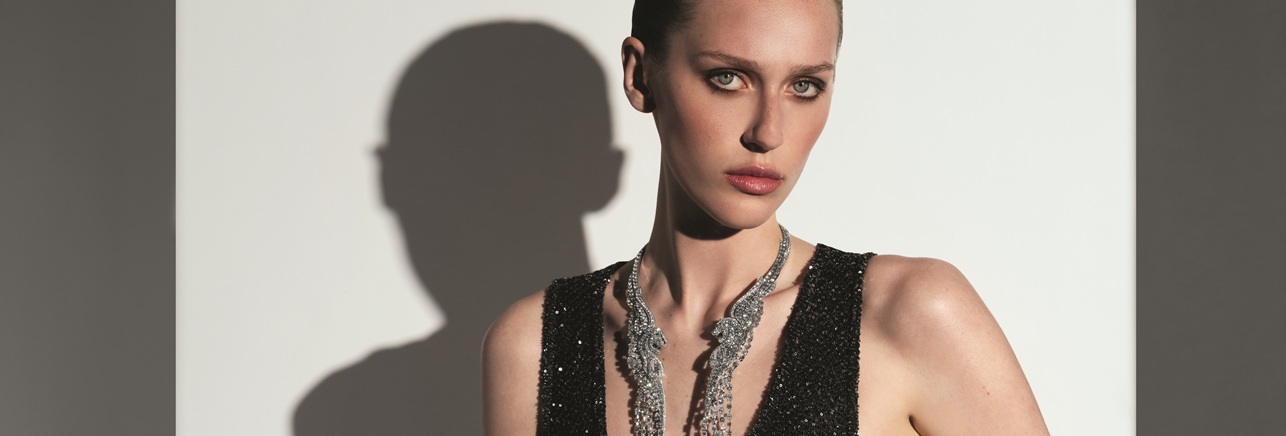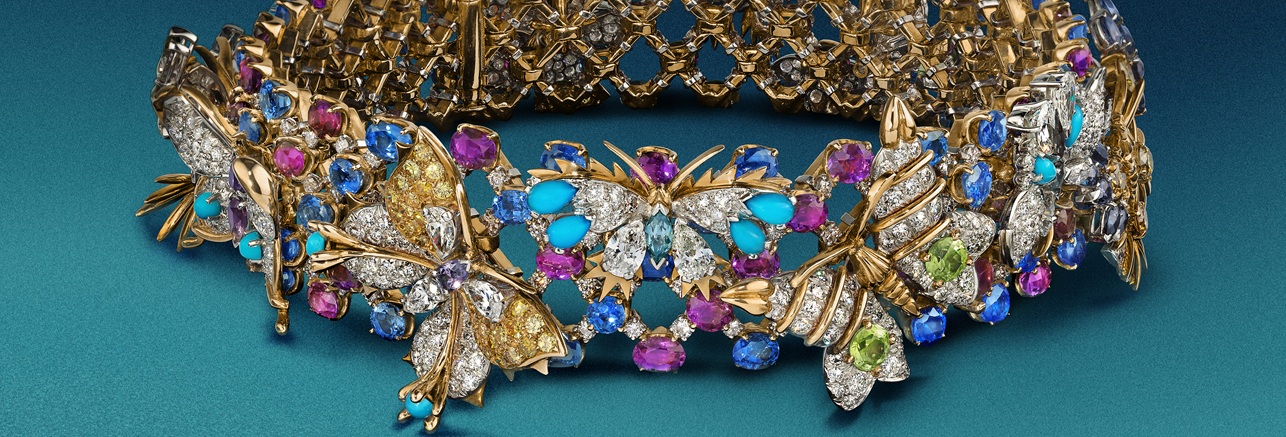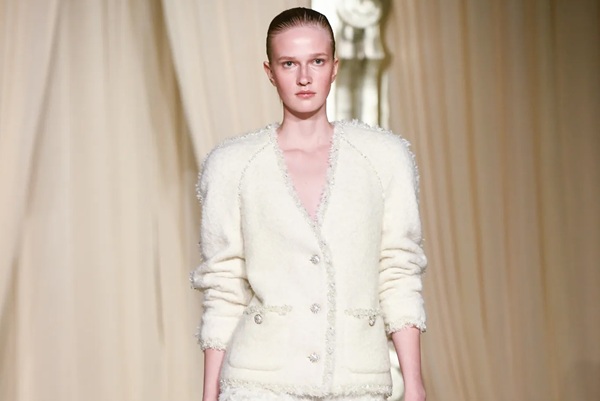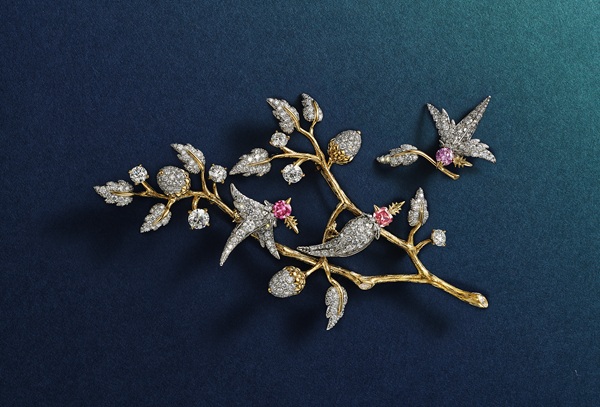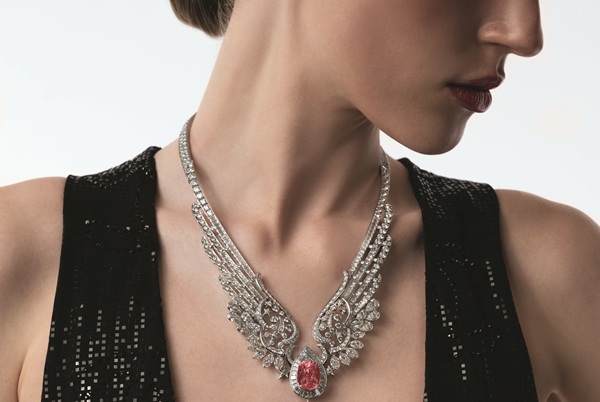175 years and counting
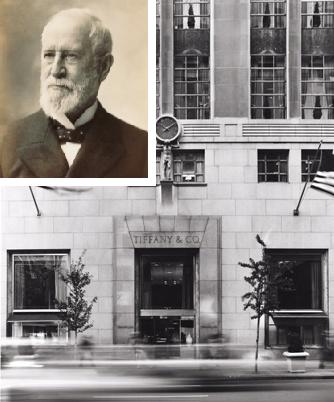 175 years and counting
175 years and counting
Tiffany & Co. is a world-renowned jeweler that epitomizes the glamour of dazzling jewels and the sophistication of
One glance at this glorious hue evokes not only excitement, but also appreciation for a legendary style that was crafted by artisans working in a tradition established 175 years ago.
Tiffany’s anniversary celebration pays tribute to the generations of designers and craftspeople who forged the jeweler’s renowned reputation. The objects of their dedication are milestones in the evolution of American design and reinforce Tiffany’s history as one of the world’s foremost jewelers and silversmiths. It was the quality of these creations, consistently and flawlessly delivered that engendered a relationship of trust between Tiffany & Co. and its customers. Over time, Tiffany’s devoted clientele came to associate the vibrant blue box with this special relationship and the highest standards of excellence.
Today and every day since, Tiffany fulfills a glorious mandate for innovation, discovery and magnificent design. The company is guided by a distinctive set of values—quality, craftsmanship, beauty and originality—that was shaped by its founder, Charles Lewis Tiffany (1812-1902). His creative passion came to define American luxury and created a legacy that would one day enchant the entire world. Highlights of the company’s dynamic history show the evolution of this great heritage and a style that is legendary.
1837 Charles Lewis Tiffany and John B. Young open a stationery and fancy goods store on Lower Broadway in
1845 Tiffany introduces the Blue Book, the first direct mail catalog to be distributed in the
1848 With a cache of splendid diamonds purchased from French aristocrats, Charles Tiffany introduces important gemstones to the
1851 Tiffany is the first American company to use the British silver standard (92% pure), later adopted as the
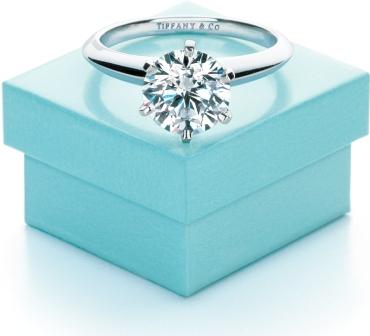 1878 Charles Lewis Tiffany pays $18,000 for a rough diamond of 287.42 carats found in the
1878 Charles Lewis Tiffany pays $18,000 for a rough diamond of 287.42 carats found in the
1878 Tiffany’s Blue Book is published with its cover in a particular shade of blue that became known as Tiffany Blue®. Soon the color appeared on Tiffany boxes and shopping bags. No longer merely a color, the distinctive shade made the Tiffany Blue Box® an international icon signifying the excellence of all Tiffany & Co. designs.
1886 The Tiffany® Setting for diamond engagement rings is introduced. This innovative setting, still the world’s most popular, is the first to lift the diamond above the band and hold it in place with six platinum prongs, allowing light to enter the stone and maximize its brilliance.
1887 Tiffany’s acquisition of the French Crown jewels establishes its reputation as a world-premier jeweler. The royal treasures were in turn purchased by
1902 Tiffany introduces kunzite, a lilac-colored variety of spudomene named for George Frederick Kunz, Tiffany’s preeminent gemologist.
1902 Louis Comfort Tiffany, son of Tiffany & Co. founder Charles Tiffany and the foremost American designer of the late 19th and early 20th centuries, becomes the company’s first art director. A world leader of the Art Nouveau movement, he is revered for his stained-glass lamps, windows and jewelry that remain popular in museums and auction houses.
1956 Master jewelry designer Jean Schlumberger, protégé of famed couturier Elsa Schiaparelli, opens a salon at Tiffany’s legendary
1961 Jean Schlumberger’s Ribbon Rosette necklace is set with the Tiffany Diamond and worn by Audrey Hepburn® in publicity photographs for the film Breakfast at Tiffany’s.
1967 The National Football League commissions Tiffany to design the first Super Bowl Trophy. Tiffany has created this icon of American sports for every subsequent Super Bowl.
1968 First Lady Mrs. Lyndon Baines Johnson (Lady Bird) commissions Tiffany & Co. to design a White House china service based on her favorite American wildflowers.
1969 Tiffany introduces tanzanite, a sparkling blue zoisite, named for
 1974 Tiffany & Co. introduces the jewelry of fashion model and designer Elsa Peretti. Inspired by natural shapes of elegant simplicity, the collection is a milestone of modern design.
1974 Tiffany & Co. introduces the jewelry of fashion model and designer Elsa Peretti. Inspired by natural shapes of elegant simplicity, the collection is a milestone of modern design.
1980 Paloma Picasso, an international fashion icon, debuts at Tiffany & Co. with a collection that establishes her reputation for jewelry of brilliant colors and originality.
2006 Tiffany & Co. introduces the jewelry designs of world-renowned architect Frank Gehry, whose achievements include the Guggenheim Museum Bilbao. His arresting forms and use of unusual materials in jewelry reflect his lifelong passion for art.
The Tiffany Novo® diamond engagement ring is showcased in the film Bride Wars, starting Anne Hathaway and Kate Hudson. The
2012 Tiffany marks its 175th anniversary. In honor of this milestone, the Tiffany Diamond is reset in a magnificent necklace of dazzling white diamonds. After traveling to gala celebrations in

